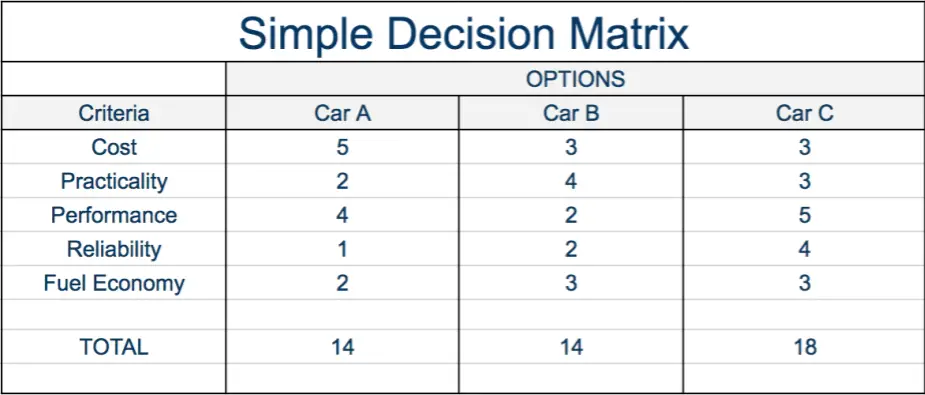

This matrix became a powerful ally to help me manage time and make sure I wasn’t bogged down in decisions where I wasn’t the best person to decide. You do have to do a bit of mental work before you start, such as defining and communicating consequentiality and reversibility, as well as where the blurring lines are. The great thing about the matrix is that it can help you quickly delegate decisions. I separated decisions into four possibilities based on the type of decision I was making. While it won’t make the decisions for you, it will help you quickly identify which decisions you should focus on. It’s so simple you can draw it on a napkin, and once you get it, you get it. It’s a decision making version of the Eisenhower Matrix, which helps you distinguish between what’s important and what’s urgent. And because I was rushing through these decisions in an effort to put more time into the important decisions, I was making worse choices than the team would have.Īs I was walking home one night, I came up with an idea that I used from the next day on, with pretty good success. In fact, they were only becoming urgent because the team wasn’t making the decisions in the first place. I figured most of the urgent decisions could be made by the team because they were easily reversible and not very consequential. I needed a quick and flexible framework to categorize decisions into the ones I should be making and the ones I should be delegating. It was clear to me that I wasn’t the right person to make all of the decisions. I was focusing on the most urgent decisions as the cost of the most important decisions. Worse, I followed the same process for all of them. I was working longer and longer to keep up with the volume of decisions. As a result, I had more decisions to make than capacity to make them. My boss, a political high flyer, also liked to delegate down the riskiest decisions. My employees were scared to make decisions because their previous boss had hung them out to dry when things went wrong. The situation built slowly over a period of weeks. I had no way to sort through them to figure out which ones mattered, and which ones were inconsequential. I was being asked to make too many decisions. I remember once struggling at the intelligence agency shortly after I received a promotion. Sometimes, trying to impose the same process on all decisions leads to difficulty identifying which ones are most important, bogging us down and stressing us out. The decisions we spend the most time on are rarely the most important ones.


 0 kommentar(er)
0 kommentar(er)
